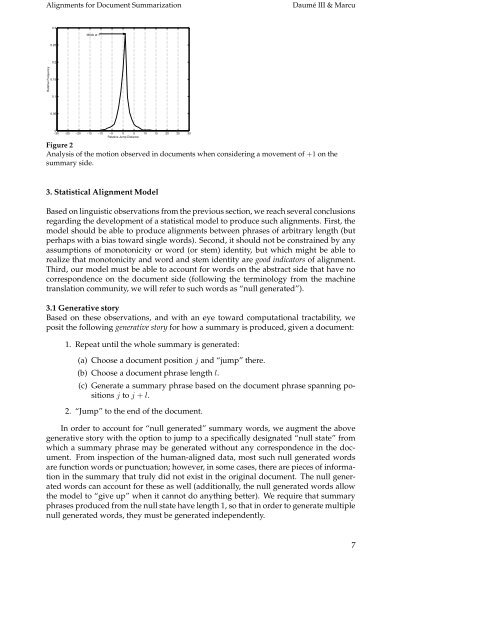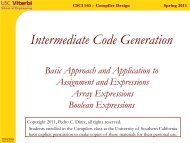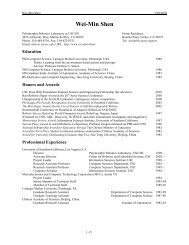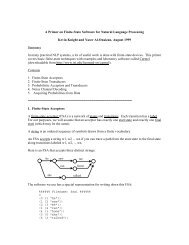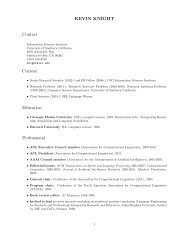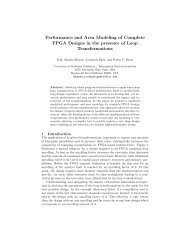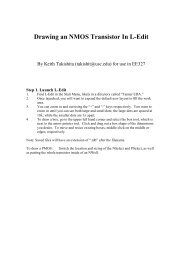Induction of Word and Phrase Alignments for Automatic Document ...
Induction of Word and Phrase Alignments for Automatic Document ...
Induction of Word and Phrase Alignments for Automatic Document ...
Create successful ePaper yourself
Turn your PDF publications into a flip-book with our unique Google optimized e-Paper software.
<strong>Alignments</strong> <strong>for</strong> <strong>Document</strong> Summarization Daumé III & Marcu<br />
Relative Frequency<br />
0.3<br />
0.25<br />
0.2<br />
0.15<br />
0.1<br />
0.05<br />
Mode at 1<br />
0<br />
−30 −25 −20 −15 −10 −5 0 5 10 15 20 25 30<br />
Relative Jump Distance<br />
Figure 2<br />
Analysis <strong>of</strong> the motion observed in documents when considering a movement <strong>of</strong> +1 on the<br />
summary side.<br />
3. Statistical Alignment Model<br />
Based on linguistic observations from the previous section, we reach several conclusions<br />
regarding the development <strong>of</strong> a statistical model to produce such alignments. First, the<br />
model should be able to produce alignments between phrases <strong>of</strong> arbitrary length (but<br />
perhaps with a bias toward single words). Second, it should not be constrained by any<br />
assumptions <strong>of</strong> monotonicity or word (or stem) identity, but which might be able to<br />
realize that monotonicity <strong>and</strong> word <strong>and</strong> stem identity are good indicators <strong>of</strong> alignment.<br />
Third, our model must be able to account <strong>for</strong> words on the abstract side that have no<br />
correspondence on the document side (following the terminology from the machine<br />
translation community, we will refer to such words as “null generated”).<br />
3.1 Generative story<br />
Based on these observations, <strong>and</strong> with an eye toward computational tractability, we<br />
posit the following generative story <strong>for</strong> how a summary is produced, given a document:<br />
1. Repeat until the whole summary is generated:<br />
(a) Choose a document position j <strong>and</strong> “jump” there.<br />
(b) Choose a document phrase length l.<br />
(c) Generate a summary phrase based on the document phrase spanning positions<br />
j to j + l.<br />
2. “Jump” to the end <strong>of</strong> the document.<br />
In order to account <strong>for</strong> “null generated” summary words, we augment the above<br />
generative story with the option to jump to a specifically designated “null state” from<br />
which a summary phrase may be generated without any correspondence in the document.<br />
From inspection <strong>of</strong> the human-aligned data, most such null generated words<br />
are function words or punctuation; however, in some cases, there are pieces <strong>of</strong> in<strong>for</strong>mation<br />
in the summary that truly did not exist in the original document. The null generated<br />
words can account <strong>for</strong> these as well (additionally, the null generated words allow<br />
the model to “give up” when it cannot do anything better). We require that summary<br />
phrases produced from the null state have length 1, so that in order to generate multiple<br />
null generated words, they must be generated independently.<br />
7


